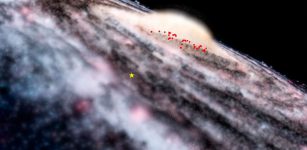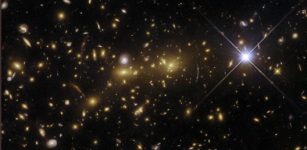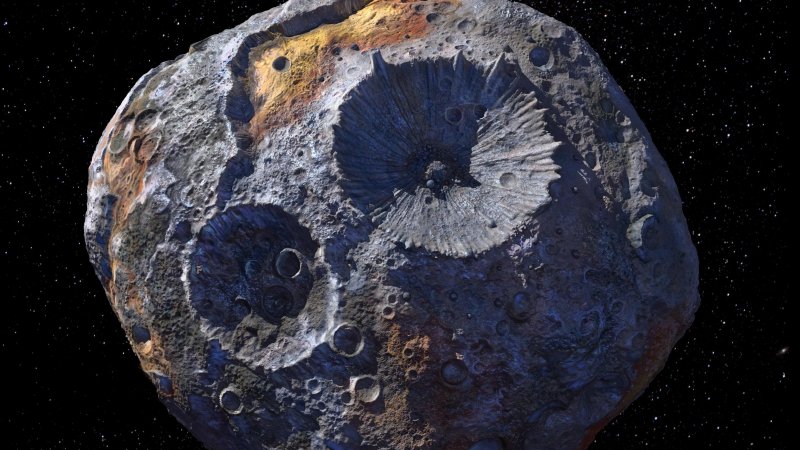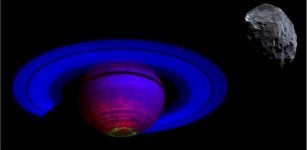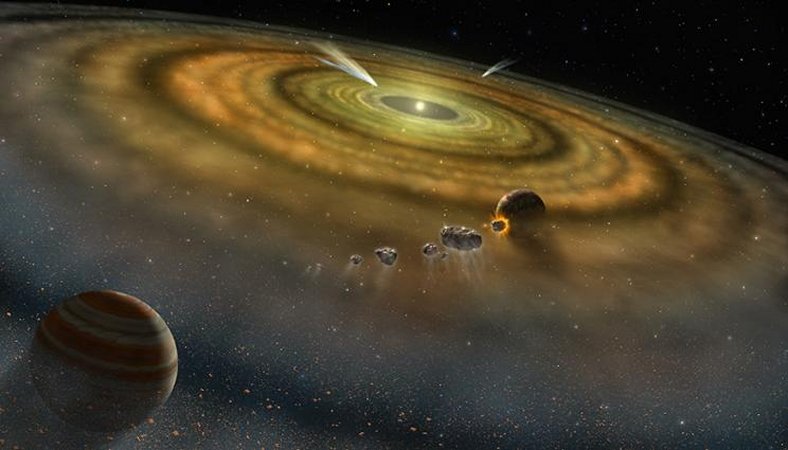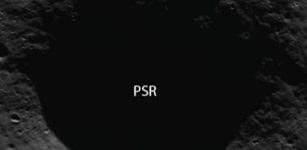Solar System Similar To Our Own Discovered In Constellation Eridanus
MessageToEagle.com – Astronomers have discovered a solar system that is very similar to our own. It’s located 10.5 light-years away in the southern hemisphere of the constellation Eridanus.
The solar system’s star Epsilon Eridani reminds of our early Sun. It is not as luminous as our Sun. It has 82% the Sun’s mass and 74% of the solar radius. but it is clearly visible to the naked eye as the third closest star observable without a telescope.
Epsilon Eridani In Science Fiction
Epsilon Eridani is one of the most mentioned stars in science fiction. If you’re a Star Trek fan, you will remember that the Epsilon Eridani system was the location of the planet Vulcan, but Epsilon Eridani (eps Eri for short) is also mentioned in Space: Above and Beyond, the Halo games, the classic Elite II and Isaac Asimov’s Foundation series and of course it is also the storied location of the Babylon 5 space station in the science fictional television series of the same name.
Epsilon Eridani is not only popular among sci-fi writer, but also of great interest to scientists because it can reveal a lot about how planets form around stars like our Sun.
Epsilon Eridani Solar System – It’s Asteroid Belts And Planets
Epsilon Eridani has a debris disk, which is the name astronomers give to leftover material still orbiting a star after planetary construction has completed. The debris can take the form of gas and dust, as well as small rocky and icy bodies.
Debris disks can be broad, continuous disks or concentrated into belts of debris, similar to our solar system’s asteroid belt and the Kuiper Belt – the region beyond Neptune where hundreds of thousands of icy-rocky objects reside.
There are two asteroid belts in the Epsilon Eridani solar system.
NASA’s flying observatory, the Stratospheric Observatory for Infrared Astronomy, SOFIA, recently completed a detailed study of a nearby planetary system and astronomers have now confirmed that the Epsilon Eridani solar system is very similar to our own.
Careful measurements of the motion of eps Eri indicate that a planet with nearly the same mass as Jupiter circles the star at a distance comparable to Jupiter’s distance from the Sun.
Much of our previous knowledge about the solar system was based on images delivered by the Spitzer Space Telescope, but SOFIA is much more powerful. It is over twice the size of Spitzer, has three times the resolution, and can operate in the infrared at wavelengths between 25 and 40 microns. This means that the telescope can discern much smaller details, especially from warm materials.
See also:
Cosmic Mystery – What Happened To Earth’s Second Moon?
Mystery Of Planet V – Was There Once A 5th Planet Between Mars And The Asteroid Belt?
Cruithne – Strange And Fascinating Celestial Body Dancing Back And Forth
A research team from the University of Arizona have studied the new SOFIA images and the scientists were able to distinguish between two theoretical models of the location of warm debris, such as dust and gas, in the eps Eri system. The model indicates that warm material is in two narrow rings of debris, which would correspond respectively to the positions of the asteroid belt and the orbit of Uranus in our solar system.
So, Epsilon Eridani looks very much like our inner Solar System, asteroid belt, Jupiter, the outer Solar System and the Kuiper Belt.
“The high spatial resolution of SOFIA combined with the unique wavelength coverage and impressive dynamic range of the FORCAST camera allowed us to resolve the warm emission around eps Eri, confirming the model that located the warm material near the Jovian planet’s orbit,” says Kate Su at the University of Arizona.
“Furthermore, a planetary mass object is needed to stop the sheet of dust from the outer zone, similar to Neptune’s role in our solar system. It really is impressive how eps Eri, a much younger version of our solar system, is put together like ours.”
Whether there is any life in the solar system is unknown. A young star such as Epsilon Eridani can produce large amounts of ultraviolet radiation that may be harmful to life, but extraterrestrial life can be stranger than we dare to image and perhaps some lifeforms can live in environments we consider hostile.
MessageToEagle.com
Expand for references

